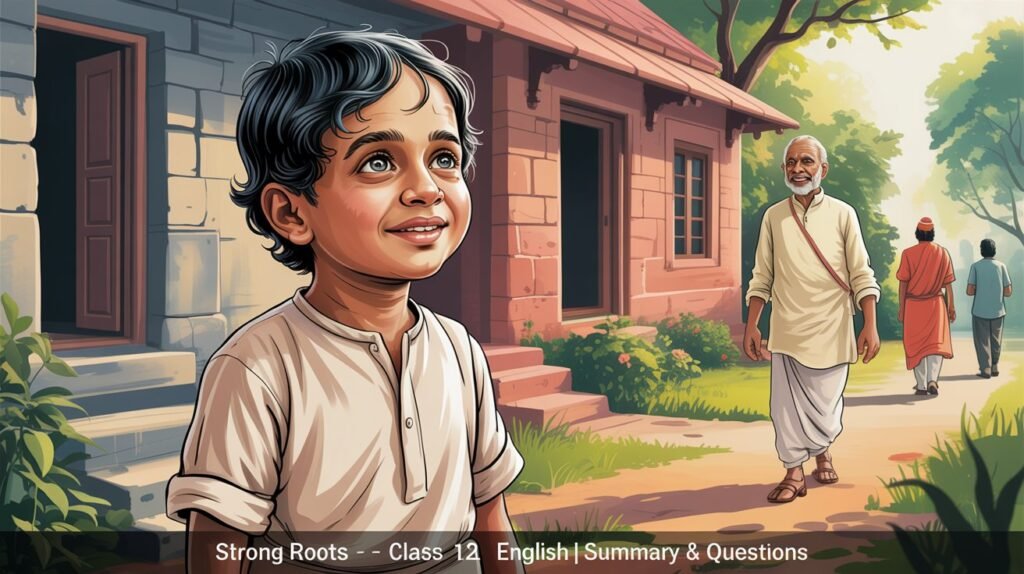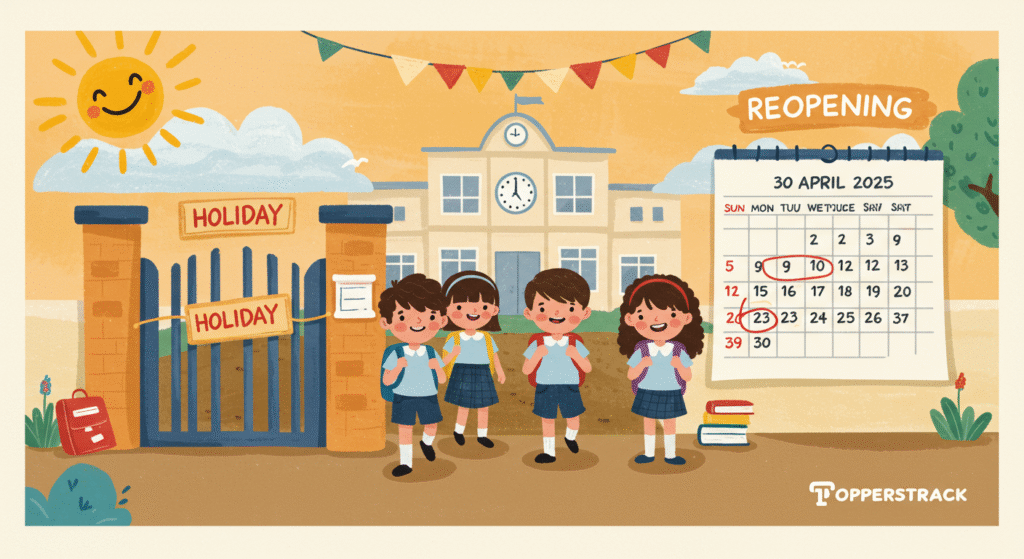
Strong Roots by A.P.J. Abdul Kalam – Summary and Insights for WBCHSE Class 12
"Strong Roots" is an autobiographical excerpt from Dr. A.P.J. Abdul Kalam’s renowned memoir, Wings of Fire. This chapter offers a profound glimpse into the early life of India’s former President, revealing the values and principles that shaped his identity. For students preparing for the West Bengal Council of Higher Secondary Education (WBCHSE) Class 12 English syllabus, this lesson is crucial—not only for its literary depth but also for its powerful life lessons. If you're looking for detailed Strong Roots Questions And Answers, this guide is your one-stop solution.
Summary of "Strong Roots"
Dr. Kalam recalls his childhood days in Rameswaram, a small coastal town in Tamil Nadu. Born into a humble Tamil Muslim family, Kalam was raised in a home that valued spiritual discipline, simplicity, and selflessness. His father, Jainulabdeen, though lacking formal education, was spiritually enlightened and often consulted by people of various religions for guidance. His mother, Ashiamma, was deeply generous—feeding many outsiders daily, regardless of caste or creed.
This environment of religious harmony and spiritual integrity laid the foundation for Kalam’s thoughts and character. His home was open to people of all faiths, and he grew up witnessing interfaith dialogue and compassion, especially in the close friendship between his father and the high priest of the Rameswaram temple. These experiences instilled in him the core values of tolerance, service, and humility—all of which are explored in depth in many Strong Roots Questions and Answers resources for Class 12 students.
Kalam also shares his deep admiration for his father’s routine and mindset. Rising early for namaz, walking miles to the coconut grove, and dedicating time to both physical work and prayer—his father’s lifestyle demonstrated the ideal balance of action and reflection. These details are often highlighted in Strong Roots Questions and Answers worksheets and are essential for exam preparation.
Strong Roots - বাংলা সারাংশ (WBCHSE Class 12 English)
Strong Roots হল ড. এ. পি. জে. আব্দুল কালামের আত্মজীবনী Wings of Fire থেকে নেওয়া একটি অংশ। এই অধ্যায়ে তিনি তাঁর শৈশব জীবনের কথা তুলে ধরেছেন, যা রামেশ্বরম নামক একটি ছোট উপকূলবর্তী শহরে কেটেছিল। তিনি একটি সাধারণ তামিল মুসলিম পরিবারে জন্মগ্রহণ করেন। তাঁর পরিবার ছিল ধর্মভীরু, সাদাসিধে জীবনযাপনকারী এবং মানবসেবায় বিশ্বাসী।
তাঁর বাবা, Jainulabdeen, ছিলেন খুব আধ্যাত্মিক চিন্তাধারার মানুষ, যদিও তাঁর আনুষ্ঠানিক শিক্ষা ছিল না। কিন্তু মানুষ তাঁর কাছে পরামর্শ নিতে আসত কারণ তাঁর চিন্তাভাবনা ছিল অত্যন্ত গভীর ও প্রজ্ঞাময়। তাঁর মা, Ashiamma, ছিলেন খুবই দয়ালু—তিনি প্রতিদিন বহু মানুষকে খাওয়াতেন, তাদের জাত বা ধর্ম যাই হোক না কেন।
এই পারিবারিক পরিবেশে Kalam ছোট থেকেই ধর্মীয় সহিষ্ণুতা, আত্মনিয়োগ এবং বিনয় শিখেছিলেন। তিনি দেখেছিলেন কীভাবে হিন্দু ও মুসলমানরা একসঙ্গে শান্তিপূর্ণভাবে বসবাস করে। তাঁর বাবা ও রামেশ্বরম মন্দিরের প্রধান পুরোহিতের মধ্যে বন্ধুত্ব ছিল আন্তরিক, যা আন্তঃধর্মীয় সৌহার্দ্যের এক উজ্জ্বল দৃষ্টান্ত।
Kalam তাঁর বাবার প্রতিদিনের রুটিন থেকে গভীরভাবে প্রভাবিত হয়েছিলেন। ভোরবেলা উঠেই তিনি নামাজ পড়তেন, তারপর কাজের উদ্দেশ্যে বেরিয়ে যেতেন, এবং সময় পেলে প্রার্থনায় মন দিতেন। এই জীবনযাত্রা থেকে Kalam শিখেছিলেন কাজ ও ধ্যানের মধ্যে সঠিক ভারসাম্য বজায় রাখা কতটা গুরুত্বপূর্ণ।
এই অধ্যায়টি ছাত্রছাত্রীদের শেখায়—কীভাবে একটি সাধারণ পরিবারেও মানসিক শক্তি, ধর্মীয় সহিষ্ণুতা এবং আত্মিক উন্নতি চর্চা করা যায়। এটি বোর্ড পরীক্ষায় একটি গুরুত্বপূর্ণ পাঠ, কারণ এর মধ্যে জীবনের গভীর মূল্যবোধ ও নৈতিক শিক্ষা নিহিত।
কেন Strong Roots গুরুত্বপূর্ণ?
- এই অধ্যায়ে দেখা যায় ধর্মীয় সহিষ্ণুতা, আধ্যাত্মিকতা, এবং জীবনের প্রতি ইতিবাচক দৃষ্টিভঙ্গি।
- Kalam-এর শৈশব স্মৃতি ছাত্রদের শেখায় নম্রতা, কঠোর পরিশ্রম এবং বিশ্বাসের গুরুত্ব।
- WBCHSE পরীক্ষায় এই অধ্যায় থেকে প্রায়ই MCQ, SAQ এবং Long Answer আসে।
আপনারা যদি Toppers Track-এ Strong Roots নিয়ে প্রশ্নোত্তর খুঁজছেন, তাহলে এই সারাংশ আপনাদের জন্য এক গুরুত্বপূর্ণ সহায়ক রিসোর্স হবে।
Why Students Must Focus on "Strong Roots Questions and Answers"
Understanding Strong Roots is not just about reading the story—it’s about analyzing its layers of meaning. The chapter is rich with symbolic references to faith, resilience, and moral clarity, making it a favorite in board exams. Many Strong Roots Questions and Answers exercises focus on Kalam’s spiritual upbringing, the communal harmony of his town, and the philosophical insights shared by his father.
Whether you’re revising for WBCHSE English or looking for high-quality practice material, our curated set of Strong Roots Questions and Answers MCQs and long-answer solutions will help you score higher while truly appreciating the essence of Dr. Kalam’s message.
Class 12 Strong Roots Questions and Answers | Class XII Strong Roots Questions and Answers | Class 12 Sem 3 Strong Roots Questions and Answers | Class XII Semester III Strong Roots Questions and Answers | Class XII Strong Roots Questions and Answers 3rd Semester | Class 12 Strong Roots Questions and Answers 3rd Sem
- Where was Dr. A.P.J. Abdul Kalam born?
A) Chennai
B) Rameswaram
C) Madurai
D) Kanyakumari
✅ Answer: B) Rameswaram - What was the name of Kalam’s father?
A) Abdul Qadir
B) Jainulabdeen
C) Lakshmana Sastry
D) Ahmad Rasheed
✅ Answer: B) Jainulabdeen - What was Kalam’s mother's name?
A) Zohra
B) Ashiamma
C) Salma
D) Ayesha
✅ Answer: B) Ashiamma - What was the construction material of Kalam's ancestral house?
A) Wood and Clay
B) Marble and Sandstone
C) Limestone and Brick
D) Concrete
✅ Answer: C) Limestone and Brick - In which street was Kalam's ancestral house located?
A) Mosque Street
B) Temple Street
C) Main Bazaar
D) Garden Road
✅ Answer: A) Mosque Street - Which religious community predominantly lived in Kalam’s locality?
A) Hindus
B) Christians
C) Muslims
D) Parsis
✅ Answer: C) Muslims - Who was the high priest of Rameswaram temple?
A) Ramalinga Swamigal
B) Pakshi Lakshmana Sastry
C) Lakshmi Narayanan
D) Ramesh Shastri
✅ Answer: B) Pakshi Lakshmana Sastry - What did Ashiamma often do as a sign of generosity?
A) Donated clothes
B) Taught children
C) Fed many outsiders
D) Offered financial help
✅ Answer: C) Fed many outsiders - Which of Ashiamma’s forebears received the title "Bahadur"?
A) Father
B) Grandfather
C) Uncle
D) Not mentioned
✅ Answer: D) Not mentioned - What did Kalam usually eat on?
A) Steel plate
B) Banana leaf
C) Clay pot
D) Silver plate
✅ Answer: B) Banana leaf - What item was NOT mentioned as part of Kalam’s usual meal?
A) Rice
B) Sambar
C) Pickle
D) Idli
✅ Answer: D) Idli - What was the time of day Kalam’s father started his routine?
A) 5 AM
B) 4 AM
C) 6 AM
D) 3 AM
✅ Answer: B) 4 AM - What did Kalam’s father do before breakfast?
A) Read newspapers
B) Went to the mosque
C) Brought coconuts
D) Read the Quran
✅ Answer: C) Brought coconuts - How far was the coconut grove from Kalam’s house?
A) 2 miles
B) 3 miles
C) 4 miles
D) 5 miles
✅ Answer: C) 4 miles - What was Kalam's physical appearance as a child?
A) Tall and slim
B) Short and undistinguished
C) Fat and fair
D) Thin and handsome
✅ Answer: B) Short and undistinguished - What prayer did Kalam not understand but believed in?
A) Sanskrit prayers
B) Arabic prayers
C) English prayers
D) Hindi mantras
✅ Answer: B) Arabic prayers - What did people bring to Kalam’s father for blessings?
A) Fruits
B) Water
C) Clothes
D) Money
✅ Answer: B) Water - How did Kalam describe his childhood?
A) Luxurious
B) Materialistic
C) Secure
D) Difficult
✅ Answer: C) Secure - What did Kalam say prayer achieved?
A) Success in exams
B) Fame
C) Communion of the spirit
D) Religious dominance
✅ Answer: C) Communion of the spirit - What helped Kalam most during times of suffering, according to his father?
A) Medicine
B) Religion
C) Introspection
D) Superstition
✅ Answer: C) Introspection - What did Kalam's father avoid in daily life?
A) Food
B) Inessential luxuries
C) Religious texts
D) Conversation
✅ Answer: B) Inessential luxuries - Who did people thank after getting cured?
A) Jainulabdeen
B) The doctor
C) Allah
D) Kalam’s mother
✅ Answer: C) Allah - What did Kalam’s father compare human beings to?
A) Divine beings
B) Soldiers
C) Elements of the cosmos
D) Sinners
✅ Answer: C) Elements of the cosmos - What did Kalam strive to emulate in his life?
A) His teacher
B) His mother
C) His father
D) His friend
✅ Answer: C) His father - What does adversity present, according to Kalam’s father?
A) Suffering
B) Opportunity for introspection
C) Failure
D) Superstition
✅ Answer: B) Opportunity for introspection - What does a correct vision help us do, according to Kalam’s father?
A) Avoid responsibilities
B) Destroy enemies
C) Discover self-enemy
D) Worship blindly
✅ Answer: C) Discover self-enemy - What title was given to one of Ashiamma's ancestors?
A) Sahib
B) Bahadur
C) Raja
D) Maulana
✅ Answer: B) Bahadur - Kalam's father described prayer as a way to—
A) Escape reality
B) Ask for favors
C) Transcend the body
D) Prove devotion
✅ Answer: C) Transcend the body - According to Kalam’s father, prayer connects us to—
A) Political leaders
B) Religious texts
C) The cosmos
D) Community leaders
✅ Answer: C) The cosmos - What attitude does Kalam’s father discourage?
A) Spiritual thinking
B) Hard work
C) Fear-ridden vision of destiny
D) Logical reasoning
✅ Answer: C) Fear-ridden vision of destiny - What role did Kalam’s father play for those seeking help?
A) Religious leader
B) Astrologer
C) Go-between for prayer
D) Doctor
✅ Answer: C) Go-between for prayer - What did people believe about the water Kalam’s father blessed?
A) It would bring rain
B) It could cure illness
C) It removed sins
D) It would improve crops
✅ Answer: B) It could cure illness - What emotion did Kalam feel when his father answered his question deeply?
A) Confusion
B) Fear
C) Excitement
D) Energy and enthusiasm
✅ Answer: D) Energy and enthusiasm - How did Kalam describe his father's ability to communicate?
A) Theoretical and abstract
B) Harsh and critical
C) Simple and down-to-earth
D) Brief and vague
✅ Answer: C) Simple and down-to-earth - What did Kalam’s father believe every human being was part of?
A) A social system
B) A political agenda
C) A divine being
D) A religious cult
✅ Answer: C) A divine being - According to Kalam, what quality defined his father's character the most?
A) Physical strength
B) Wealth
C) Spiritual wisdom
D) Political knowledge
✅ Answer: C) Spiritual wisdom - What language did Kalam’s father use to explain spiritual truths?
A) English
B) Hindi
C) Urdu
D) Tamil
✅ Answer: D) Tamil - What did Kalam call his childhood in terms of emotional and material aspects?
A) Neglected
B) Secure
C) Risky
D) Luxurious
✅ Answer: B) Secure - Why did people sit outside the mosque after evening prayers?
A) To meet Kalam
B) To ask questions
C) To seek blessings from Kalam’s father
D) To offer donations
✅ Answer: C) To seek blessings from Kalam’s father - What was the primary message Kalam received from his father's teachings?
A) Scientific curiosity
B) Religious rituals
C) Self-realization and inner strength
D) Political activism
✅ Answer: C) Self-realization and inner strength - Kalam’s father did not possess which of the following?
A) Spiritual wisdom
B) Wealth and formal education
C) Physical strength
D) Religious tolerance
✅ Answer: B) Wealth and formal education - What kind of problems did Kalam's father say people face?
A) Physical only
B) Spiritual only
C) Problems related to caste
D) Difficulties, sufferings, and problems
✅ Answer: D) Difficulties, sufferings, and problems - According to the passage, what is prayer NOT?
A) A form of begging
B) A way to connect with the cosmos
C) A spiritual exercise
D) A communion of the spirit
✅ Answer: A) A form of begging - What routine did Kalam’s father maintain even in his late sixties?
A) Teaching children
B) Attending political meetings
C) Walking to the coconut grove
D) Fishing early in the morning
✅ Answer: C) Walking to the coconut grove - What idea did Kalam reject about prayer as a child?
A) That prayer had meaning
B) That it reached God
C) That he understood the words
D) That it was useless
✅ Answer: C) That he understood the words - What did Kalam’s father think about people who came to him for help?
A) They were superstitious
B) They lacked education
C) They were misled in their spiritual journey
D) They misunderstood destiny
✅ Answer: D) They misunderstood destiny - What term did Kalam’s father use to explain human connection with divinity?
A) Vision of fate
B) Specific element in divine being
C) Mortal duty
D) Spiritual curiosity
✅ Answer: B) Specific element in divine being - What did Kalam seek to integrate with science and technology in his life?
A) Financial discipline
B) Spiritual knowledge from his father
C) Political awareness
D) Cultural traditions
✅ Answer: B) Spiritual knowledge from his father - How does Kalam describe the effect of severing emotional and physical bonds?
A) Loss of identity
B) Inner peace and freedom
C) Suffering
D) Ego boost
✅ Answer: B) Inner peace and freedom - What does Kalam say exists to help one rise from confusion and failure?
A) Good fortune
B) Education
C) Divine power
D) Ritual practices
✅ Answer: C) Divine power



